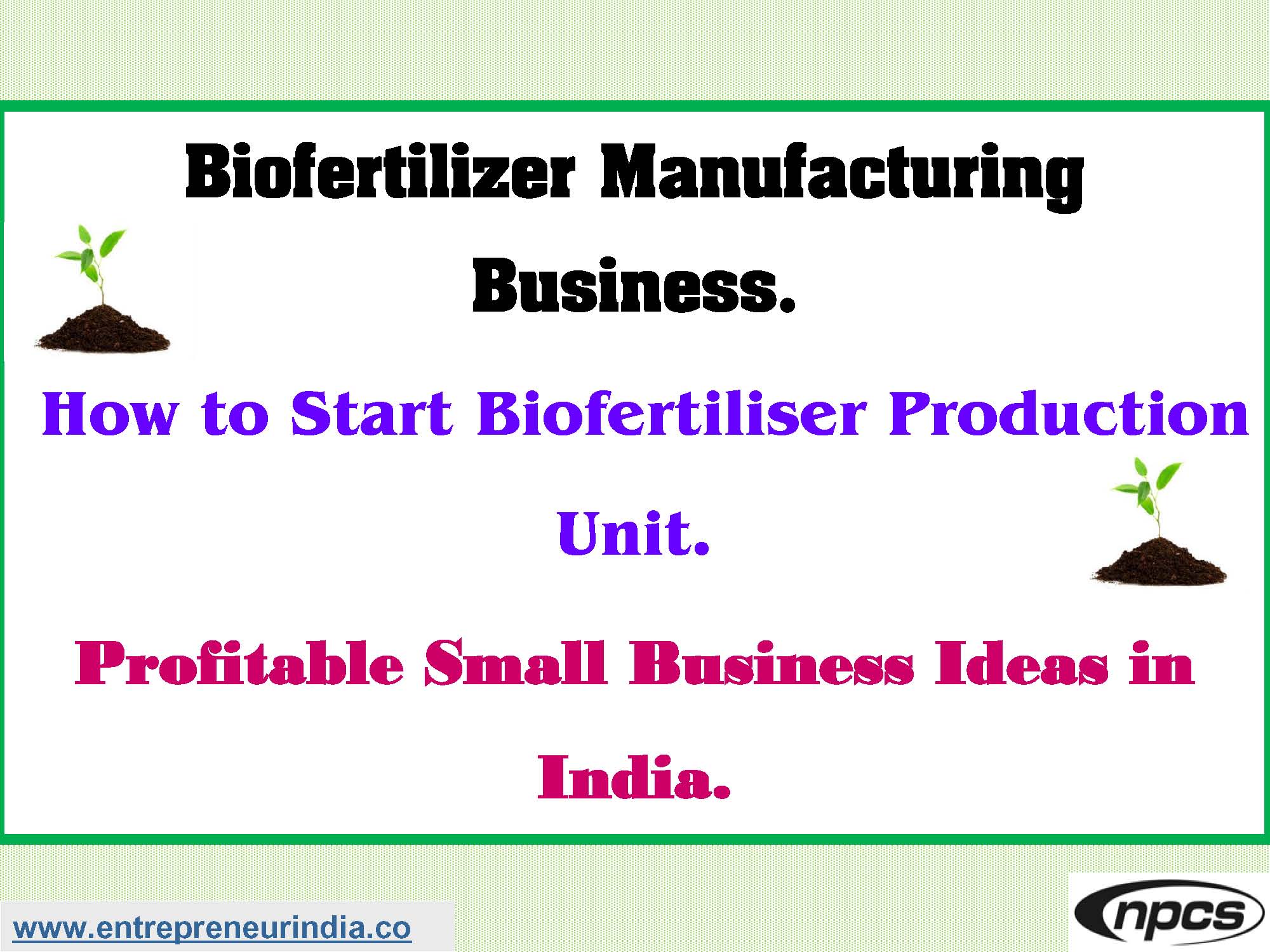
The global push toward sustainable farming has made the biofertilizer production unit one of the most rewarding ventures in modern agriculture. Farmers are actively shifting from chemical-based fertilizers to organic inputs, creating a fast-growing market for biofertilizers. Entrepreneurs who capitalize on this movement can build a profitable business while helping the environment. With increasing government support, rising consumer demand for organic food, and the need for long-term soil health, now is the perfect time to start a biofertilizer production unit and enter this future-proof industry.
Launch a Successful Biofertilizer Production Unit with a Scalable Model
Setting up a biofertilizer production unit involves strategic planning, access to the right microbial strains, and understanding basic microbial technology. Within 9–12 months, you can achieve a return on investment if you follow modern practices. This section outlines the core requirements and step-by-step roadmap to launch and run a fully functional unit.
Understand the Basics of Biofertilizer
Biofertilizers are living microorganisms that improve soil fertility by fixing nitrogen, solubilizing phosphorus, and enhancing nutrient uptake. Unlike chemical fertilizers, they don’t pollute the soil and are suitable for sustainable farming. Popular strains include:
-
Rhizobium, Azospirillum, and Azotobacter (Nitrogen fixers)
-
Phosphate Solubilizing Bacteria (PSB)
-
Mycorrhizal fungi for root development
-
Potash Mobilizing Bacteria
Each of these organisms plays a specific role in promoting healthy crop growth.
Choose the Right Location and Infrastructure
Before you start a biofertilizer production unit, secure a well-ventilated and sanitized facility. A space of around 2,000 square feet is enough for a small-scale unit. Divide the workspace into:
-
Inoculum preparation area
-
Mixing and carrier sterilization unit
-
Packaging section
-
Storage for finished products
Ensure that the building meets biosafety and hygiene standards. Basic lab equipment like pH meters, incubators, and autoclaves are necessary to maintain culture purity.
Get the Required Licenses and Certifications
Compliance is essential to legally operate your biofertilizer production unit. Obtain:
-
FCO (Fertilizer Control Order) Certification
-
BIS standards for labeling and quality
-
GST registration
-
Pollution Control NOC
Register with your local agriculture department to become an approved supplier for government distribution networks.
Procure the Microbial Strains and Raw Materials
To begin production, you’ll need access to certified strains from recognized agricultural research institutes or microbial banks. Other essential raw materials include:
-
Carrier material (lignite, peat soil, or charcoal)
-
Jaggery or molasses for culture enrichment
-
Water (preferably distilled)
-
Packaging material (polyethylene bags or HDPE bottles)
Ensure that all ingredients meet quality specifications to maintain the biofertilizer’s shelf life and effectiveness.
See Also :- Medical Gases Manufacturing
Follow the Step-by-Step Manufacturing Process
To start a biofertilizer production unit, the manufacturing process must follow strict microbial protocols. Here’s a brief outline:
-
Inoculum Preparation – Culture the selected microorganisms in nutrient-rich media.
-
Mass Multiplication – Transfer to large fermenters for bulk production under aseptic conditions.
-
Carrier Preparation – Sterilize and dry the carrier material to eliminate contaminants.
-
Blending and Curing – Mix carrier with the microbial broth, allow it to stabilize.
-
Packaging – Use airtight, UV-resistant bags or bottles labeled with manufacturing and expiry dates.
All steps require careful monitoring of temperature, pH, and moisture content to ensure maximum viability of the microbes.
Estimate the Investment and Expected Returns
A small-scale biofertilizer production unit needs an investment of ?10–15 lakhs. The costs include:
-
Fermenters and lab setup: ?3–5 lakhs
-
Raw material and initial culture: ?2 lakhs
-
Packaging and labeling: ?1 lakh
-
Licensing, rent, and manpower: ?3–4 lakhs
With proper marketing and quality assurance, you can generate a monthly turnover of ?2–3 lakhs, leading to a break-even point within 12–15 months.
Target the Right Market Segments
Once production starts, your biofertilizer production unit can cater to:
-
Organic farmers and cooperatives
-
Agri-input retailers and wholesalers
-
NGOs promoting sustainable agriculture
-
Government agricultural schemes and procurement
-
Direct-to-farmer sales at mandis and Krishi Vigyan Kendras
By building long-term relationships and offering trial samples, you can increase brand loyalty and secure bulk orders.
Boost Sales through Smart Marketing Strategies
Your success depends on how well you position your product. Consider these tactics:
-
Develop educational brochures explaining the benefits of biofertilizers.
-
Attend agricultural expos and exhibitions to showcase your products.
-
Partner with agri-tech platforms to reach digital buyers.
-
Offer bundled pricing and discounts for bulk purchases.
-
Promote testimonials and field success stories to build credibility.
Creating a strong presence on social media and agri-communities like DeHaat, Kisan Network, and AgriBazaar helps amplify your visibility.
See Also :- Artificial Marble Tiles
Ensure Quality Control and Certification
To keep your biofertilizer production unit competitive, maintain strict quality checks:
-
Periodic testing of microbial counts
-
Check contamination levels in every batch
-
Keep logs for traceability and regulatory inspections
-
Renew licenses and certifications regularly
Apply for ISO 9001, Agmark, or organic input certification to appeal to premium and export markets.
Sustain Your Business with Continuous R&D
Invest in continuous research to diversify your offerings. You can explore:
-
Liquid biofertilizers with extended shelf life
-
Consortium biofertilizers combining multiple strains
-
Region-specific microbial formulations
-
Biopesticides and growth promoters
By upgrading your knowledge and staying aligned with organic farming trends, you can stay ahead of the competition.
See Also :- Hotel Business in India
Conclusion
Starting a biofertilizer production unit is more than just a business—it’s a contribution to sustainable agriculture and soil health. With minimal risk, strong government support, and growing demand across India and abroad, it’s one of the most viable MSME ideas today. When executed with care, scientific rigor, and market focus, this business can deliver consistent profits and long-term growth.





